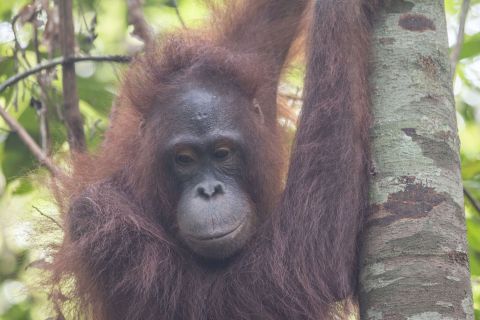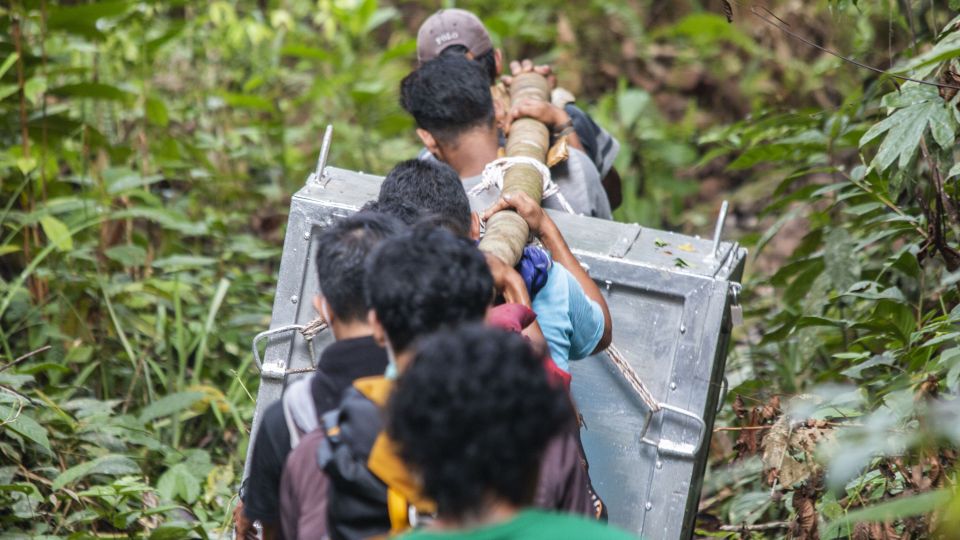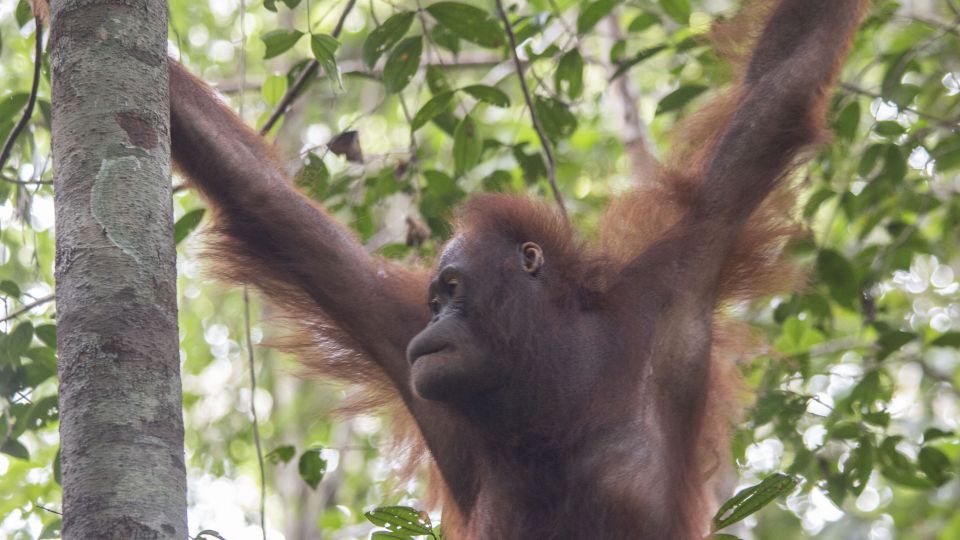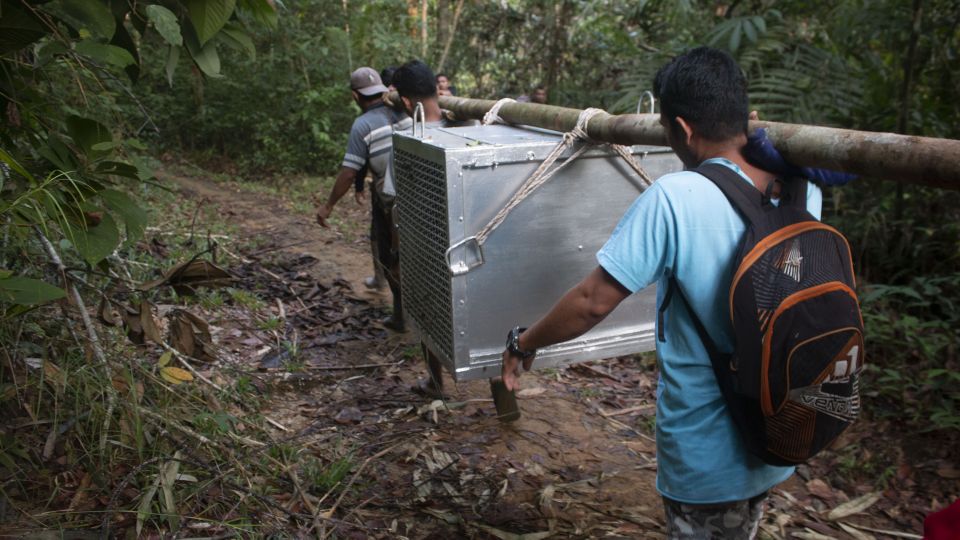
Members of our team in Indonesia and the local forestry department (BKSDA) in West Kalimantan (West Borneo) recently completed the successful reintroduction into the wild of a rehabilitated orangutan (Pongo pygmaeus) and three slow lorises (Nycticebus menangesis.)
On 27 September the endangered primates were released into the protected forest of Mount Tarak in Ketapang Regency, West Kalimantan.
The female orangutan is called Bunga which means Flower in English. She had been rescued in Ketapang Regency in 2009, when she was less than a year old. Her owner claimed to have found Bunga and kept her as a pet for three months before handing her over to us. After being rescued, Bunga underwent a period of rehabilitation in our Orangutan Rescue and Conservation Centre in Sungai Awan. During the rehabilitation process Bunga joined other rescued orangutans in ‘forest school’ on man-made islands created to simulate the apes’ natural habitat. Here they learn all the skills they will need to survive back in the wild, such as climbing, foraging for food and building a new nest each night to sleep in.

The rehabilitation process is designed to restore the orangutans’ natural instincts and behaviour. In the wild, baby orangutans remain with their mothers until they are between six and eight years old. During that time, their mothers teach them all the skills they will need to fend for themselves in the forest.
The orangutans in our centre were separated from their mothers when they were still babies and so they must learn from our army of ‘babysitters’ and caregivers, and from each other, how to behave like wild orangutans.
The rehabilitation process is a lengthy and costly one. While the length of time varies depending on each individual, it can take seven or eight years before an orangutan is deemed ready to return to the forest. The IAR centre is currently home to more than 100 orangutans undergoing rehabilitation in preparation for their reintroduction into the wild.

During the final stage of their rehabilitation, candidates for release are placed on a special island where a team of keepers gathers behavioural data on each individual to ensure that each animal is mentally and physically equipped to return to its natural habitat.
The journey to the release site from IAR’s centre on the Awan River involved a four hour journey by road, followed by a further four and a half hour trek on foot to the release site. A team of eight local villagers acted as porters to carry the transport cage into the forest.
Because Bunga has spent eight years undergoing rehabilitation, her progress back in the wild will be monitored for the next one or even two years. The monitoring team is recruited from villagers living in the hamlets on the edge of the Mount Tarak Forest. They will follow the orangutan from the moment she wakes until the moment she goes to sleep in her nest each night, observing and recording her movements and behaviour. They will also be monitoring a number of orangutans that have previously been released.

The three slow lorises that were also released consisted of one male named Acong and two females named Yuyun and Yulia. They had all previously been kept as people’s pets. Acong and Yuyun came from Pontianak, while Yulia was from Sambas.
The three of them were released into a habituation cage on Mount Tarak where they would be observed for a week or two to ensure they are exhibiting all the natural behaviours they need to live in the wild. Should there be any issues with their physical condition, the medical team will step in to assess and treat them before they are finally set free. Sadtata Noor, Head of the West Kalimantan BKSDA, said:
“It is so worthwhile and so uplifting to release animals like these back into their natural habitat. But our conservation efforts are far from complete. We will continue with this work until there are no more animals to release because they have all been returned to their rightful home and are living in their natural habitat. Only then will our job be done.” Karmele L Sanchez, Director of IAR’s Indonesia Programme, added:
“Bunga is one of the first orangutans we rescued back in 2009. Now, after eight years of rehabilitation, she has finally been given the chance to return to her natural habitat. But for some time ahead, she won’t be completely on her own because our team will be following and monitoring her to ensure she adapts well to her new environment. I’m so thrilled that Bunga has completed her journey through rehabilitation and hope she has a bright future ahead of her back in the forest.”

